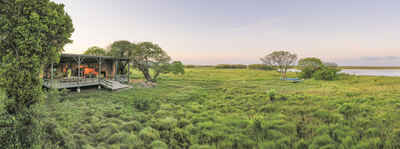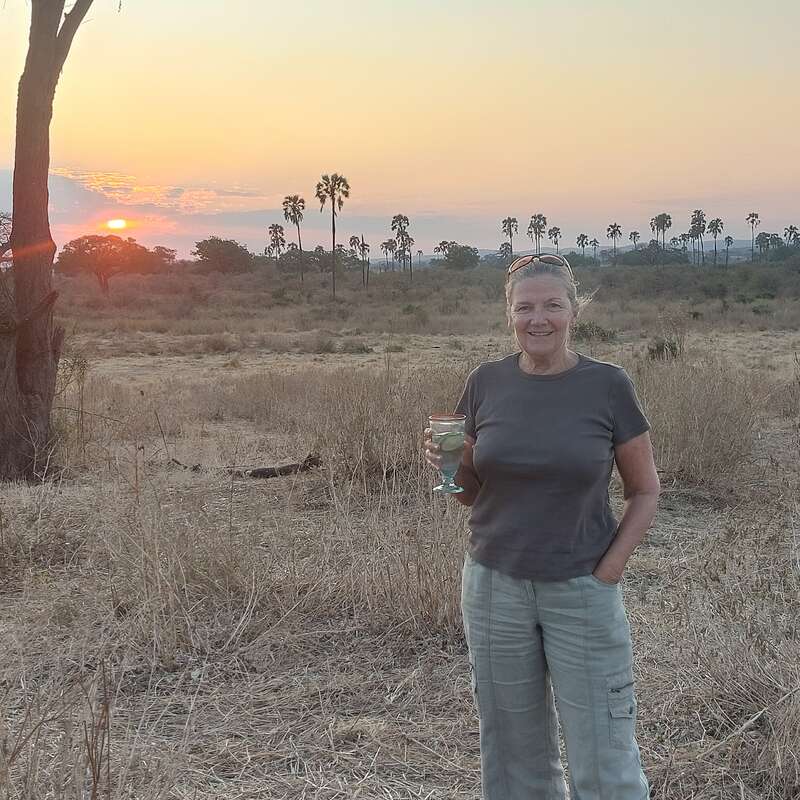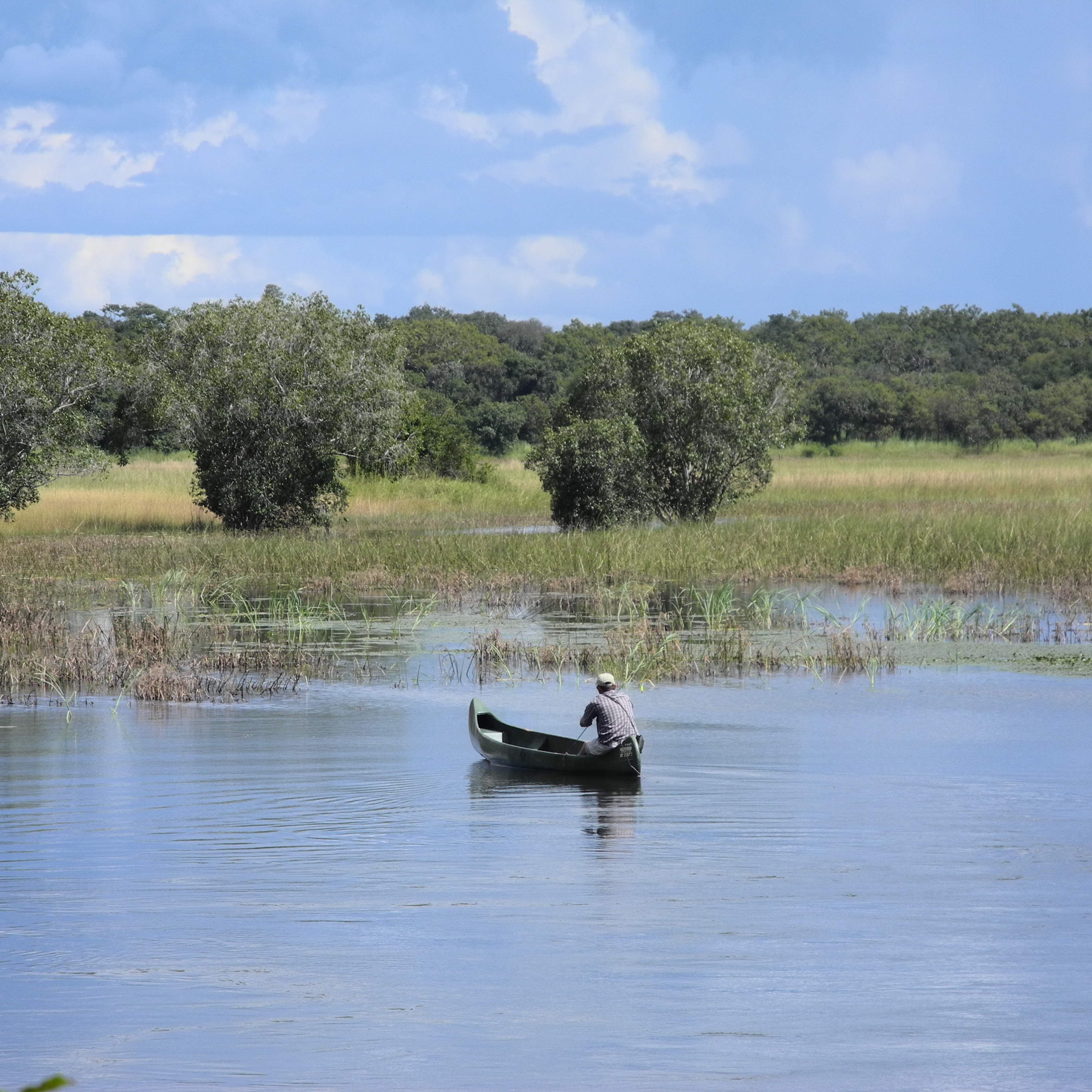About Shoebill Island Camp
Overlooking the breathtaking Bangweulu Wetlands from a small, permanent tree-island, Shoebill Island Camp is the place to stay in this area.
Filled with reed beds, shallow lagoons and sinuous channels, this watery wilderness is a RAMSAR wetland site of global importance, home to myriad bird species and significant numbers of mammals.
Shoebill Island Camp itself is nestled deep in these wetlands, under a verdant canopy of indigenous trees, and affording superb panoramic views from its low rise above the lagoon.
It’s a simple bushcamp: just four, walk-in tents, comfortably furnished, and a modest, open-fronted central area. But the essence of Shoebill Camp is not in its design and furnishings.
The camp is a collaboration between two impressive companies: conservation NGO African Parks, who are spearheading efforts in Bangweulu, and Luangwa safari specialists, Remote Africa Safaris. Together, they’re a powerhouse combination of local knowledge, hospitality and top-notch guiding. To stay here is to spend time with fascinating people who are deeply knowledgeable about this spectacular environment, its wildlife and local communities.
Sit back in a canoe amid the lily-filled waters, enjoy a game drive or guided walking safari, track cheetah with the carnivore programme, or visit the shoebill rearing facility. There’s activities aplenty – just don’t forget your camera and binoculars!
For an offbeat experience, in one of Zambia’s less-visited marvels, this could be the perfect spot...
Our view
Shoebill Island Camp is a classic bushcamp: simple, comfortable and focused on its surroundings. Superb for serious bird enthusiasts and the perfect spot for seasoned safari aficionados looking for a completely different environment. It's offbeat, authentic and delivers super wildlife in a magical setting. Great in combination with Kasanka or Remote Africa's camps in the Luangwa Valley.
Accommodation
4 Meru-style tents
Children
Best for ages 12+.
Open
1 May to 31 October
Activities

4WD Safari

Birdwatching

Canoeing

Guided walking safari
Traveller reviews of Shoebill Island Camp
10 real, un-edited reviews from Expert Africa's travellers.
Arrived 8 Aug 2024, 3 nights
"Shoebill Island Camp review"
Overall rating: Good
Arrived 23 Jun 2022, 2 nights
"Shoebill Island Camp review"
Overall rating: Good
Arrived 25 May 2022, 3 nights
"Shoebill Island Camp review"
Overall rating: Excellent
Arrived 16 Jun 2021, 2 nights
"Shoebills are Real!!"
Overall rating: Excellent
Arrived 10 Jun 2015, 3 nights
"Shoebill Island Camp exceeded expectations"
Overall rating: Excellent
Arrived 14 Oct 2014, 4 nights
"Shoebill Island Camp review"
Overall rating: Good
Arrived 17 Jun 2014, 3 nights
"Shoebill Island Camp review"
Overall rating: Good
Arrived 30 Oct 2013, 3 nights
"Shoebill Island Camp review"
Overall rating: Excellent
Arrived 27 May 2012, 2 nights
"Remarkable wetlands, remarkable wildlife"
Overall rating: Good
Arrived 25 Apr 2009, 4 nights
"Shoebill Island Camp review"
Overall rating: Excellent
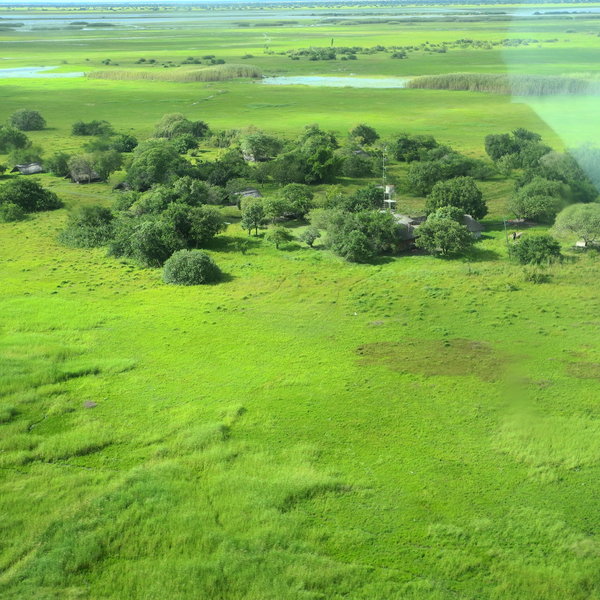
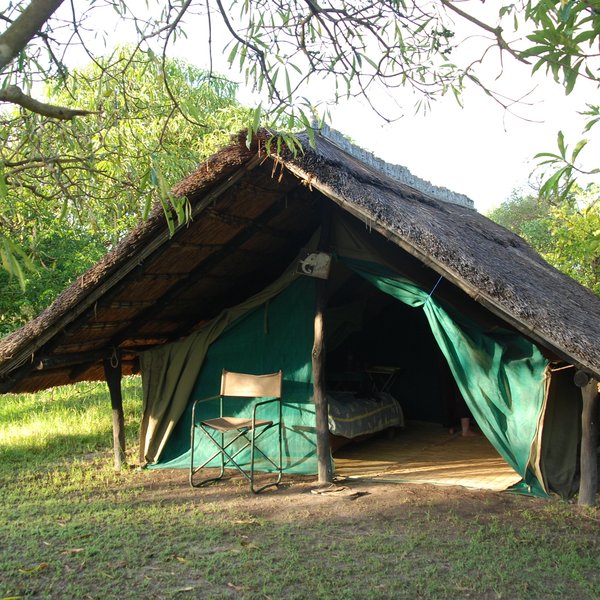
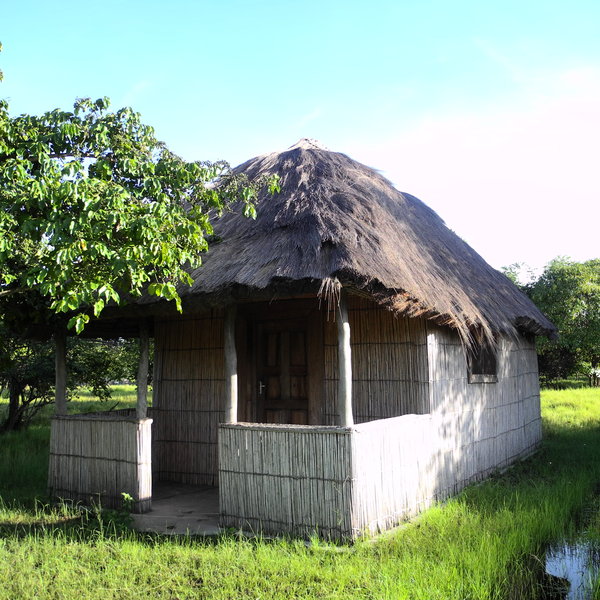
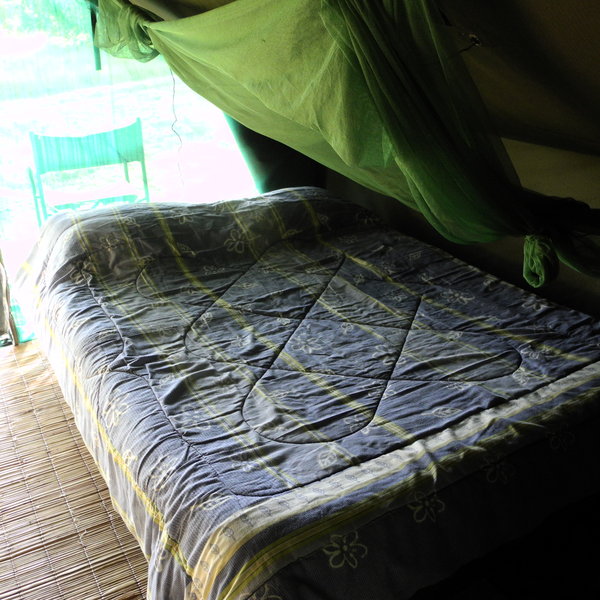
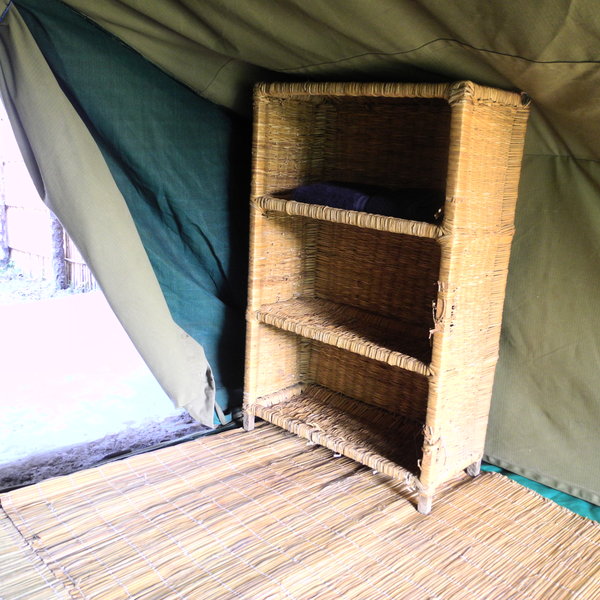
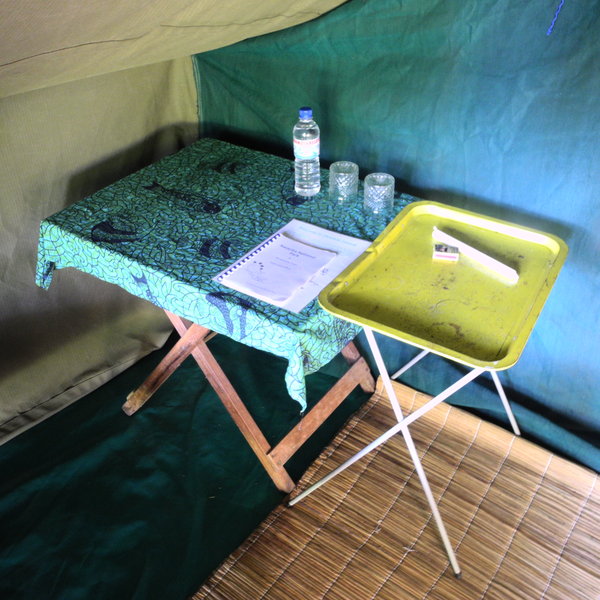
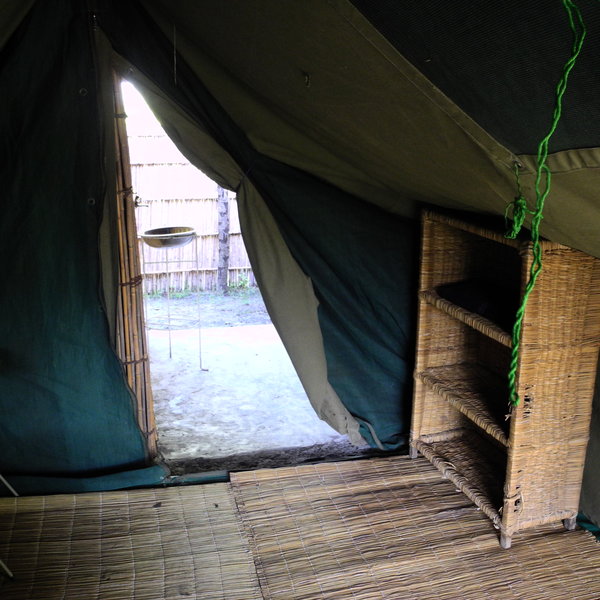
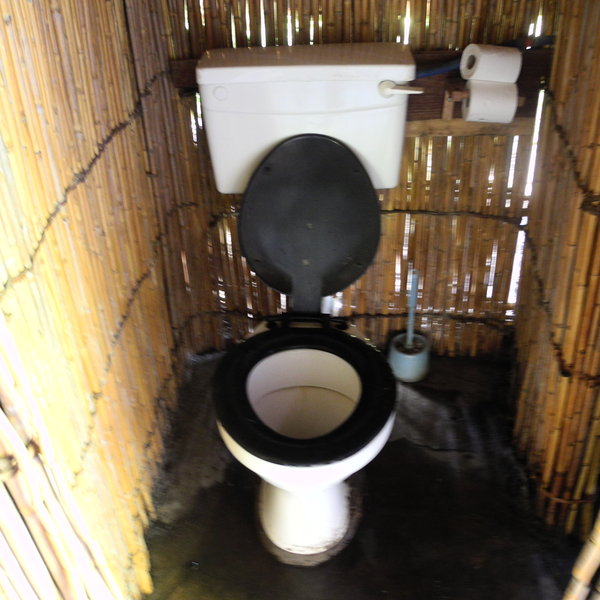
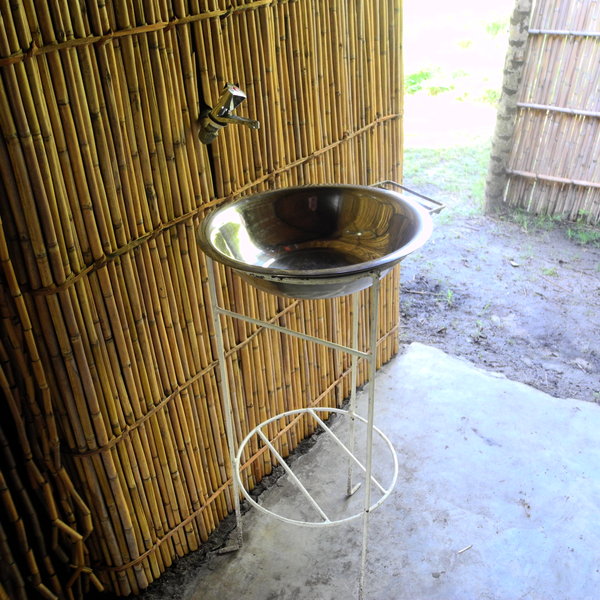
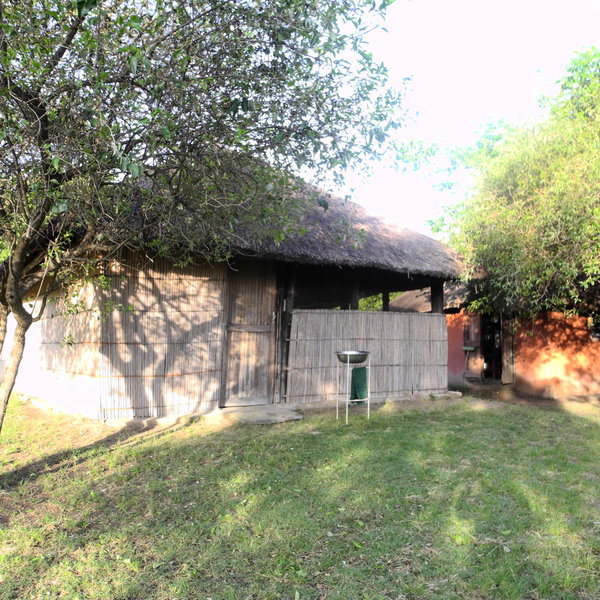
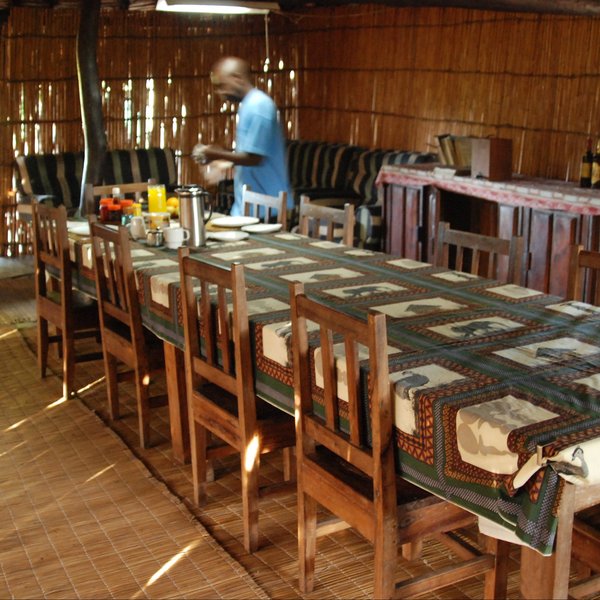

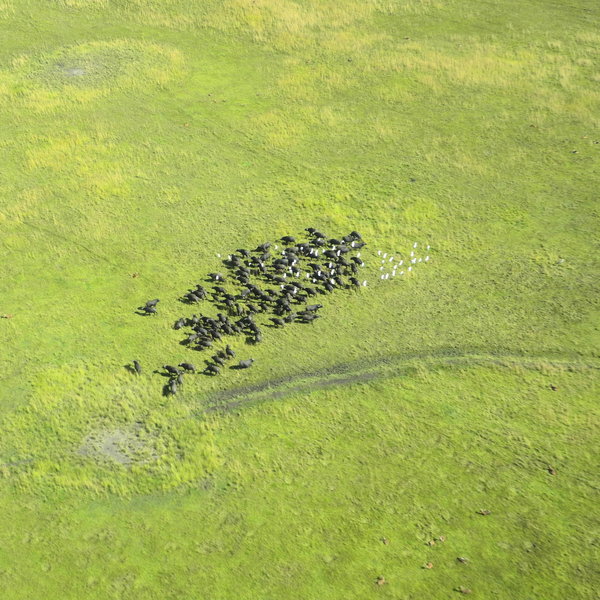
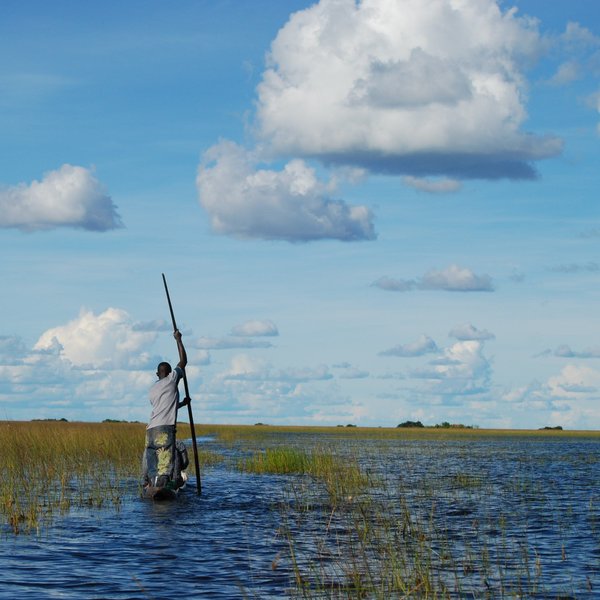
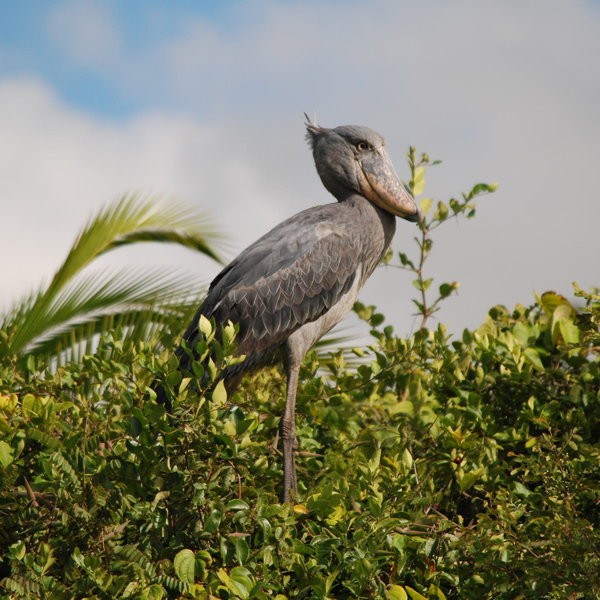
Expert Africa's gallery
When we travel we take lots of photos ourselves to give you a real and un-edited view of the safaris. See our 19 pictures and 1 videos of Shoebill Island Camp to get the candid view.
View galleryShoebill Island Camp: Our full report
Shoebill Island Camp has been renovated, offering increased comfort, good food and super guiding, thanks ...
... to a collaboration between Luangwa safari operator Remote Africa Safaris (well known for their superb camps: Tafika and Chikoko Trails in South Luangwa, and Mwaleshi and Takwela in North Luangwa) and the formidable conservation NGO African Parks.
A small, simple tented camp, Shoebill Island stands under a grove of beautiful trees on the western side of a small, permanent island at the edge of Zambia's Bangweulu Wetlands - an enormous flooded wilderness of low islands, reed-beds and shallow lagoons, surrounded by a wide band of short-grass floodplains and forest beyond.
The wetlands are home to a great deal of wildlife – mammals and birds – as well as a scattering of local fishing communities. Bangweulu is a unique destination, fascinating for both wildlife enthusiasts and Africa-philes. Travel here is not always easy though, so it's not usually a first safari destination.
The camp is a bird-watching paradise, for seasoned twitchers and novices alike. Over 430 globally significant migratory & resident bird species can be found in the vicinity, with BirdLife International deeming it an ‘Important Bird Area and RAMSAR listing its status as a ‘Wetland of International Importance’.
Water birds abound in the lagoons: numerous ducks and geese, as well as flamingos, pelicans, spoonbills, storks, herons, kingfishers and ibises. Endangered wattled cranes stroll on the grass plains (in fact, 10% of the world’s population live here), whilst the star attraction for many remains the extraordinary prehistoric-looking shoebill. It’s often possible to visit the nearby Shoebill Chick Rearing programme, although viewing Shoebill is not guaranteed and is at the discretion of the African Parks researchers.
Though many visitors come for the birds, Bangweulu's wildlife can also be spectacular. Tens of thousands of black lechwe, - an attractive dark sub-species, endemic to the area - mass on the open grass plains, where you'll also find sitatunga, tsessebe, reedbuck, common duiker and plenty of oribi. Elephant and buffalo are also frequently seen, while hyena, leopard and side-striped jackal are occasionally present.
In 2020, cheetah, were reintroduced to the region after a 100 year absence, and appear to be thriving. Tracking these fast cats with the team from the carnivore programme is a great activity option at Shoebill Camp, and makes for some excellent photographic opportunities.
There's really only one place to stay in Bangweulu: Shoebill Island Camp. On a low tree island, on the southern edge of the wetlands, it's surrounded by spectacular watery panoramas.
Recently rebuilt, Shoebill Camp remains an old-style safari camp with simple, functional facilities, albeit comfortable ones, and a greater emphasis on the area’s wilderness and wildlife.
Raised on concrete and reed platforms, each of the four walk-in Meru-style tents has a small, shaded terrace and private, en-suite bathroom. The tents are simply furnished inside with cotton rugs on the canvas floors, a double or twin beds, covered by a mosquito net, solid timber furniture offering practical storage and a vibrant chitenge covered armchair.
The clean, ochre coloured bathroom is accessed through a canvas flap at the back of the tent, and has a hot-water rain shower, a flush toilet and a wide basin. There’s a circular mirror, bamboo ladder lined with towels and an array of eco-friendly bathroom products.
The heart of Shoebill Camp is the modest, open-front central area, simply decorated with old dugout canoes and traditional fishing traps from the area. With a cosy fireside lounge, where a pair of smart green sofas and colourful chitenge covered armchairs welcome laid-back relaxation and evening chatter, and a communal dining table, surrounded by stylish wicker armchairs and decorated with understated elegance, it’s a laid-back, social hub. The bar, deck and adjacent campfire are all popular hangouts given their excellent vista across the lagoon: a beautiful panorama and a super spot to watch for birds and herds of black lechwe.
From May to October, when the camp is open, game drives on the surrounding plains are possible to view the vast herds of black lechwe (there are over 50,000 in Bangweulu!) and buffalo, whilst the prolific birdlife and incredible shoebills can often be seen on canoe trips, in a banana boat or dugout mokoro canoe through the swamps. The best time to see the elusive shoebills is from late May, when the birds start nesting, to August, when all the nests have chicks. These trips are also a great opportunity for impromptu encounters with the friendly, local fishing communities. Walking safaris, are also possible here and good guiding is guaranteed under the current management team.
Activities
4WD Safari
Birdwatching
Canoeing
Guided walking safari
Families & children
- Attitude towards children
- Children over 8 years old are welcome at Shoebill Island Camp.
- Property’s age restrictions
- 8 years +
- Special activities & services
- None
- Equipment
- None
- Generally recommended for children
- Children over 8 years old are welcome at Shoebill Island Camp, but we do not usually recommended it for children under 12 years.
Food & drink
- Usual board basis
- Full Board & Activities
- Food quality
- Remote Africa Safaris have an excellent reputation for the food in their Luangwa camps, so we’d expect the cuisine here to be fresh and full of flavour under their management.
- Dining style
- Group Meals
- Dining locations
- Indoor and Outdoor Dining
- Further dining info, including room service
- No
- Drinks included
- Drinks are included except for premium brands
Our travellers’ wildlife sightings from Shoebill Island Camp
Since mid-2018, many of our travellers who stayed at Shoebill Island Camp have kindly recorded their wildlife sightings and shared them with us. The results are below. Click an animal to see more, and here to see more on our methodology.

67% success

33% success

33% success

33% success

0% success

0% success

0% success

0% success

0% success

0% success

0% success

0% success

0% success

0% success
Getting there
- Location
- Northern Zambia, Zambia
- Ideal length of stay
- Two or three nights will give you enough time to do the activities at Shoebill. The main visiting season for shoebills is late May to August, when they can usually be seen from canoe trips.
- Directions
- Although it is possible to drive here in the dry season (a 5 hour bumpy ride from Kasanka), Shoebill Camp is best accessed by light aircraft. It has its own airstrip one kilometre from camp called Chimbwe or, when this is not in operation, guests will be flown to Inja Airstrip, approximately a 2.5 hour drive from camp.
- Accessible by
- Fly-and-Transfer
Special interests
- Birdwatching safaris
- Shoebill Island Camp is an absolutely superb spot for birdwatchers, with over 430 globally significant migratory & resident bird species found in the Bangweulu Wetlands. 10% of the global population of Wattled cranes strut along the plains, whilst White cheeked bee-eaters, Rufous bellied herons, Lesser and Greater swamp warblers, Gallinule, a profusion of waterfowl and of course the wonderful shoebills, all make for great avian sightings!
- See ideas for Birdwatching safaris in Zambia
- Cultural Experiences
- Bangweulu Wetlands is a community-owned, protected area, striving to be a leading example of community-driven conservation. 50,000 people from six Chiefdoms in the area sustainably harvest Bangwuelu’s natural resources for their survival and livelihoods, and impromptu visits by canoe to their tiny, reed-thatched fishing villages are genuinely warm and insightful.
- See ideas for Cultural Experiences in Zambia
- Wildlife safaris
- The Bangweulu area boasts diverse wildlife, including 50,000 endemic black lechwe, often in large herds, plus oribi, tsessebe, and sitatunga. Buffalo graze while jackal and hyena roam. In 2020, cheetahs were reintroduced after 100 years, offering visitors exciting tracking opportunities.
- See ideas for Wildlife safaris in Zambia
Communications
- Power supply notes
- There is a communal charging area (220V) & a plug point in the room
- Communications
- There is no wifi or cell-phone signal at Shoebill Island Camp.
- TV & radio
- None
Health & safety
- Malarial protection recommended
- Yes
- Medical care
- There are two hospitals on the Great North Road at Chilonga and Chitambo. However for more serious emergencies it is possible to arrange a medivac from the airstrip at the camp.
- Dangerous animals
- High Risk
- Security measures
- There are no guards on site
- Fire safety
- There is a fire extinguisher in the kitchen
Useful info
- Disabled access
- Not Possible
- Laundry facilities
- Laundry in included. Please note that this is done by hand so no valuable items should be included. For cultural reasons ladies underwear should not be included.
- Money
- There is no currency exchange available in camp
- Accepted payment on location
- Cash is accepted in US$ and Zambian kwacha
Plan and book your trip with Expert Africa
All of our trips are tailor-made, so we'll always adapt them to suit you. Talk to an Expert and let us plan and arrange your perfect trip.

Talk to an Expert
Call or email us now! We’ll match you with the Specialist in our team who is best suited to help you. Then together we can start planning your trip.

Set up your itinerary
Based on our experience and your ideas, your specialist will create a detailed, costed itinerary. We’ll refine it together, until we have a trip that you’re perfectly happy with.

Prepare for your trip
The same Specialist will make the seamless arrangements for your trip, send you detailed travel documents, and be available to answer any questions before you depart.

Travel with peace of mind
After you set off, you’ll be cared for by our partners in Africa, most of whom have worked with Expert Africa for decades. And if you ever need us urgently, we’re available 24/7.

When you return
We love to learn about your trip, and so will always be grateful if you’ve the time to give feedback to your Specialist when you return.
Shoebill Island Camp's location
Look closer at the environment and surroundings of Shoebill Island Camp.
Other lodges in Northern Zambia
Alternative places to stay in this same area.
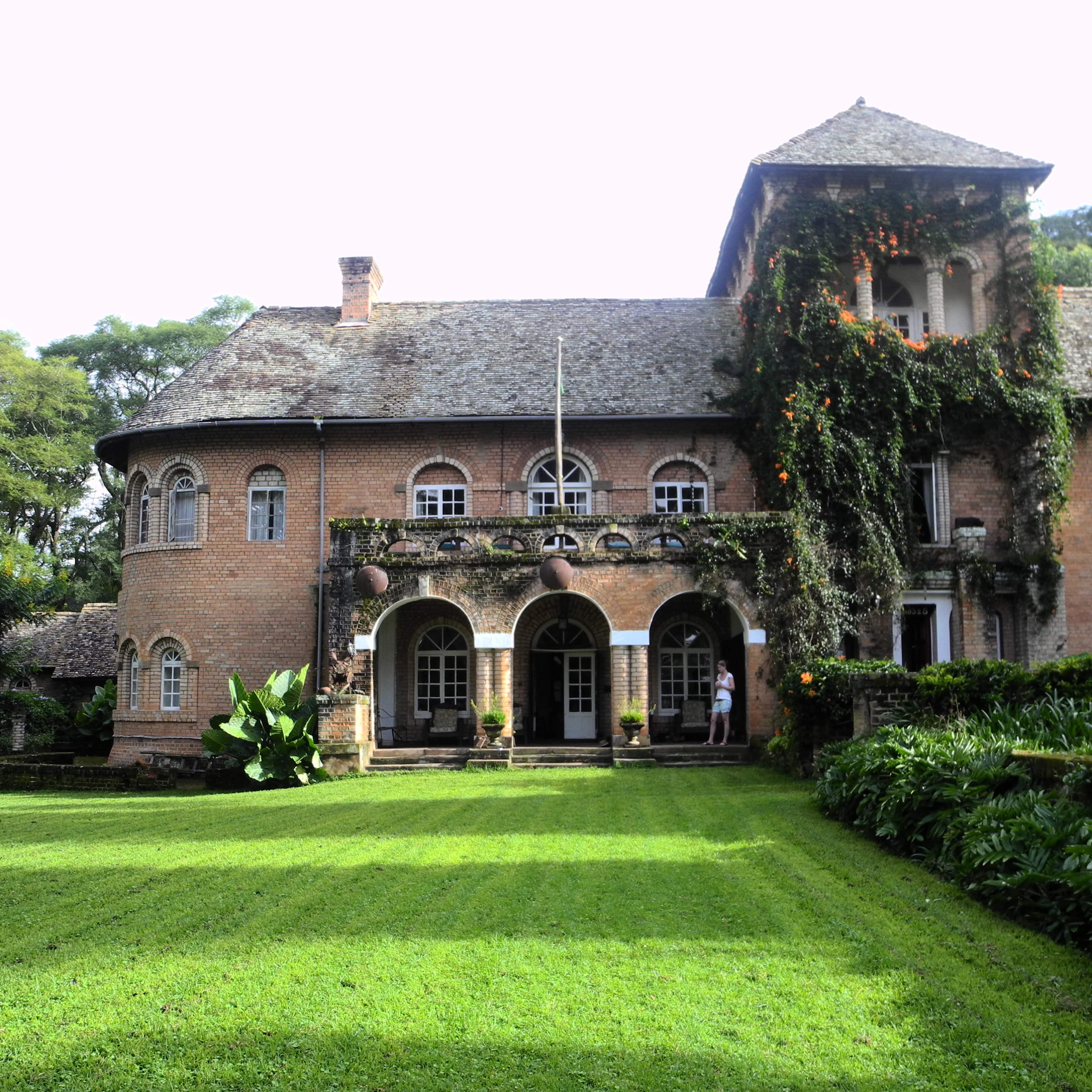
Shiwa Ng'andu
The Old Manor House at Shiwa Ng’andu is a fascinating cultural and historic stopover, either before, after or during a safari.
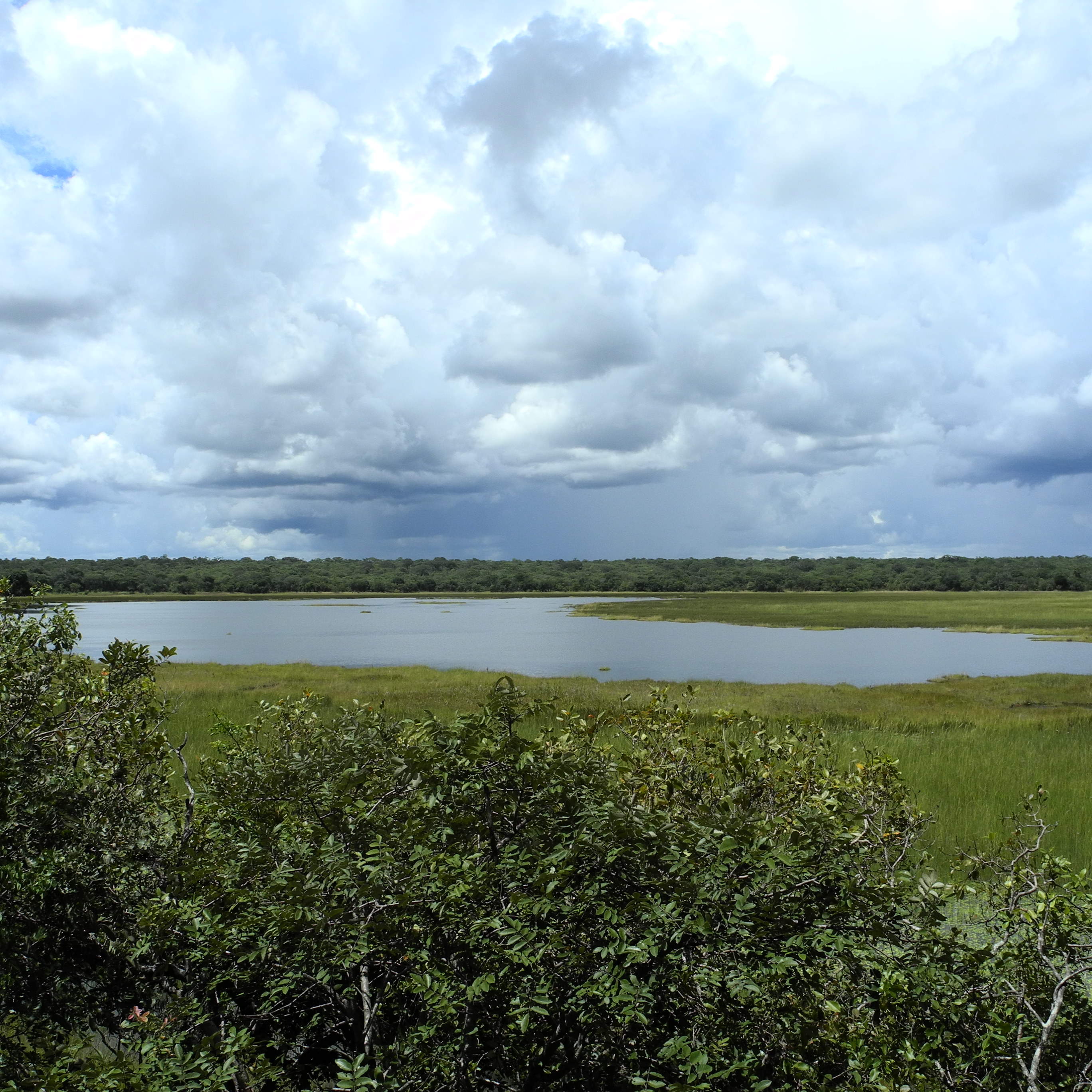
Wasa Lodge
Wasa Lodge offers easy access to Kasanka National Park, best visited in November and December to see the millions of fruit bats that arrive in the area.
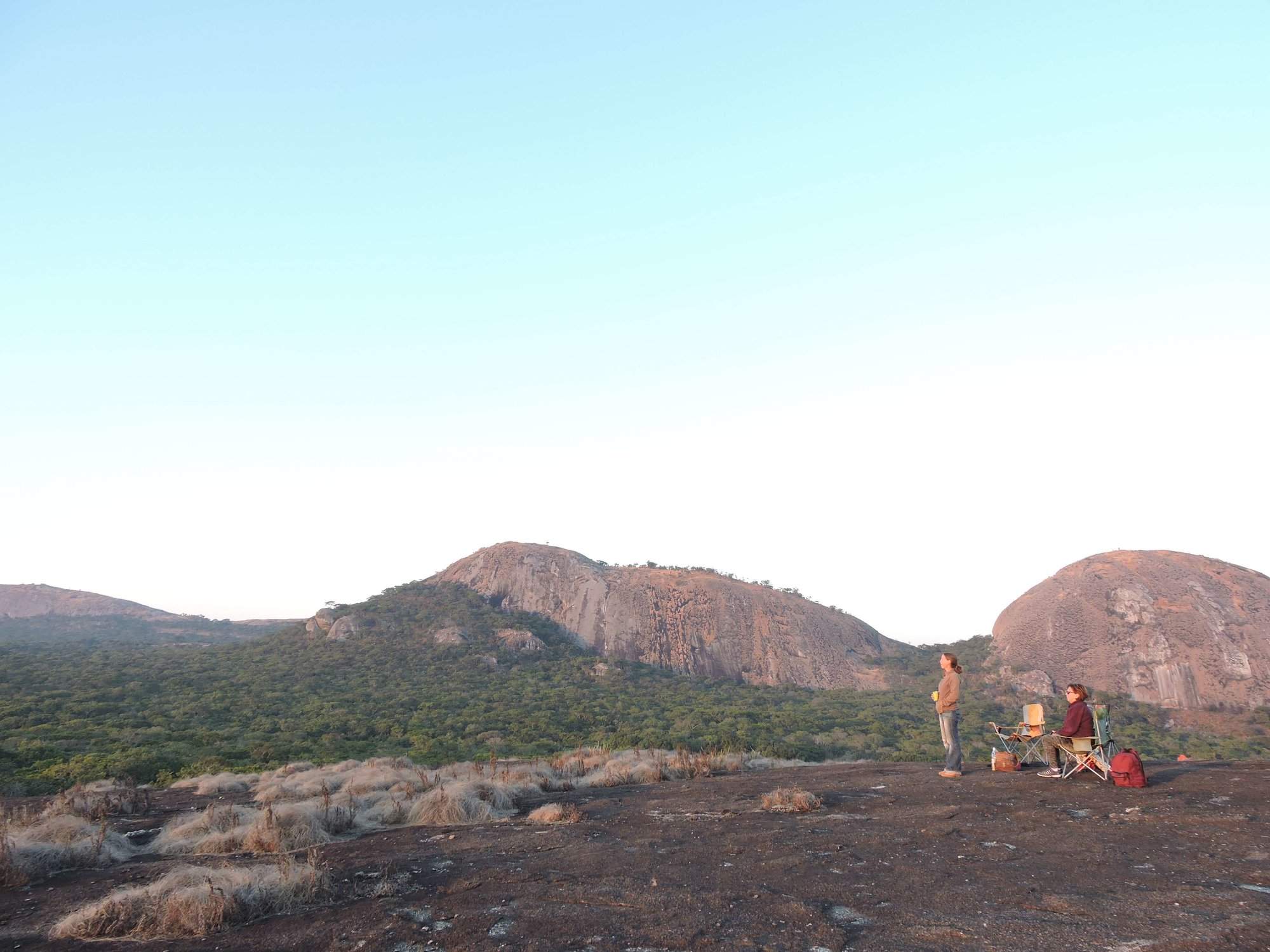
Mutinondo Wilderness
Visiting Mutinondo Wilderness near Mpika in northern Zambia - the accommodation, wildlife, birds and animals
When to go to Northern Zambia
Our month by month guide: What it's like to visit Shoebill Island Camp in Northern Zambia
Jan
Feb
Mar
Apr
May
Jun
Jul
Aug
Sep
Oct
Nov
Dec
Zambia in January
At the peak of Zambia’s rainy season, you can expect heavy rainfall for a few hours most days, with sunny spells in between. Temperatures remain high, reaching over 30ºC, with high humidity. The rainfall is yet to make a significant difference to the Victoria Falls, and the flow of water here remains low. The landscapes are green and lush and the air crystal clear, but with the abundance of water the wildlife disperses, and the thick bush can restrict sightings. It severely limits walking safaris too. Migrant birds boost the species count at this time.
With seasonal rivers in flood and dirt roads and airstrips unusable, many camps in Zambia become inaccessible, and close. Only a few lodges in the central Kafue and the South Luangwa remain open. Few people visit in January, so the parks are incredibly quiet and the camps charge their lowest rates.
- Peak of rainy season: hot & humid, with rain for a few hours most days
- Majority of camps closed throughout the month
- Bush incredibly green & lush, with clear air – great for photography
- Big game dispersed & thick bush makes sightings difficult
- Very few visitors: the cheapest time to visit
Our view
This is not a great time to visit
Weather in January
Zambia in February
February remains in the heart of the rainy season, with dramatic thunderstorms delivering a few hours of rain most days, interspersed with clear sunny skies. There is still an abundance of water in the environment, dispersing game and closing camps. With the thick bush, game viewing is limited and walking safaris restricted, but the swollen rivers allow some activities that would be unavailable in the dry season, such as boat trips on the Luangwa River.
After a couple of months of rain, water will once more be making its way to the Zambezi River, and the flow of water over the Victoria Falls will start to pick up.
Visitor numbers and costs at the few open camps remain low.
- Peak of rainy season: hot & humid with rain for a few hours most days
- Most camps closed throughout the month
- Bush lush & green: good for photography but poor for game viewing
- Very few visitors, & the cheapest time to visit
- Water levels at Victoria Falls still low, but starting to pick up
Our view
This is not a great time to visit
Weather in February
Zambia in March
March is the last month of the rainy season in Zambia, and there are still heavy downpours most days. Water levels are at their highest making it difficult to get around the country. Temperatures still reach over 30ºC most days, too, with the rain causing high levels of humidity.
Many camps remain closed, and the thick bush limits game viewing and walking safaris. However, many animals are raising young at this time of year, with predators taking advantage of the easy prey, so sightings can be incredible, if sporadic. Wild dogs in the South Luangwa are particularly active at this time of year. With clear air and increasingly frequent blue skies as a backdrop, photography can be spectacular. The birding remains excellent as thousands of birds prepare for their winter migration.
- Peak of rainy season, hot & humid, with rain for a few hours most days
- Majority of camps closed throughout the month
- Bush remains green & lush: good for photography but poor game viewing
- High abundance of animals with young
- Very few visitors, & the cheapest time to visit
Our view
This is not a great time to visit
Weather in March
Zambia in April
As the rains change from intense downpours to lighter and sporadic showers, April is very much a transitionary period in Zambia. The landscape remains exceptionally green and lush, with sparse viewing of larger wildlife.
Although camps start to reopen in April, most remain closed, and others that were open at the start of the year may shut to prepare for the coming dry season. This is the first month of the year when it’s possible to visit the Lower Zambezi.
The Zambezi River will be at its highest level with the Victoria Falls in full flow, but with huge amounts of spray kicked up views of the waterfall are often obscured.
- Tail end of the rainy season; hot & humid with light rain most days
- Some camps reopen; possible to visit the Lower Zambezi
- Bush still green & lush: good for photography; poor for game viewing
- Victoria Falls in full flow but with poor views
- Very few visitors, & the cheapest time to visit
Our view
This is not a great time to visit
Weather in April
Zambia in May
May is typically the first month of the dry season. While there is the chance of an odd shower, the majority of days are clear and sunny. As winter approaches, temperatures start to drop, with most days reaching highs of around 26ºC.
As the landscape dries out, access to the parks improves, and all but the most remote bushcamps reopen. After five months of rain there is still a lot of standing water, but despite the thick bush May marks a distinct improvement in game viewing, and clear air is a continuing bonus for photographers.
The end of the month can be a popular time for visitors, taking advantage of typically good weather, improved game viewing, and the last of the low-season rates offered by the camps.
- Start of the dry season in a typical year, with mostly clear & sunny
- Majority of camps open
- Bush still green & lush, with clear air for photographers
- Game viewing starts to improve
- Last month of low rates at the camps
Our view
A good time to visit, with pros & cons
Weather in May
Zambia in June
Zambia sees virtually no rainfall in June, with a strong chance of sunny days throughout. The humidity drops dramatically and, as winter approaches, temperatures reduce, falling to around 10ºC at night but still warming to 25ºC during the day.
The landscape remains lush but the bush starts to die back significantly, improving visibility for game viewing and walking safaris. All the camps in the South Luangwa and Lower Zambezi are open by the start of June. While some have a ‘shoulder season’, others start charging their highest rates.
The water coming over the Victoria Falls starts to recede, reducing the mist and spray kicked up, providing better views of the waterfall itself.
- Reliably sunny days, but dropping temperatures, especially at night.
- All camps in the South Luangwa, southern Kafue & Lower Zambezi open
- Wildlife viewing continuing to improve
- Increased visibility & cool weather perfect for walking safaris.
- Viewing of the Victoria Falls at its best
Our view
A very good time to visit
Weather in June
Zambia in July
As the dry season continues, vegetation and long grasses have mostly died back and water starts to become scarce. Wildlife starts to cluster around the major sources of water and the game viewing approaches its best.
July is the first month of winter, and while daytime temperatures are in the 20s Celsius, temperatures at night can drop to single digits. Early morning and late evening drives in open vehicles are particularly cold, and blankets and hot water bottles are often provided.
Visitor numbers increase significantly and space at popular/small camps can get tight. Nearly all properties are now charging their highest rates. Even floodwaters on northern Kafue’s Busanga Plains have now receded, and all camps in Zambia are open.
- Warm, dry days; cold, crisp nights
- Significantly improved game viewing
- Walking safaris are unrestricted by vegetation, with good temperatures
- Approaching peak season, so significant increase in costs
- Northern Kafue now accessible
Our view
A very good time to visit
Weather in July
Zambia in August
By August, the vegetation has died back and wildlife is now congregating around the remaining water sources, providing excellent game viewing. With virtually no chance of rain you are almost guaranteed sunny days, although dust and smoke in the air means a visible haze starts to appear on the horizon.
Temperatures can drop below 5ºC at night but climb to the 20s Celsius during the day. Jackets and gloves are recommended for morning and evening drives. This is one of the most popular – and most expensive – months to travel. European school holidays have little impact on travel within Zambia, but they do increase international flight costs, and all camps are charging their highest rates.
- Very dry with warm days but cold nights
- Excellent wildlife viewing, as animals congregate around water holes.
- Haze developing on the horizon, potentially affecting photographs
- Cool temperatures & clear sightlines: ideal for walking safaris
- Peak season: camps & flights at their most expensive
Our view
Fantastic: the very best time to visit
Weather in August
Zambia in September
September is the most popular, and arguably the best, time of year to travel. Rain is almost unheard of so humidity is low, and temperatures are starting to climb. Morning drives are more comfortable, with daytime temperatures normally in the low 30s Celsius.
Water is scarce, so wildlife clusters around the few remaining sources. Game viewing is very nearly at its best, with a good chance of seeing interactions between species. Camps are charging their highest rates and are at their busiest, with popular camps often fully booked more than a year in advance.
A significant haze sometimes appears on the horizon, impacting on landscape views and affecting photography. Depending on the rainfall in the wet season, the Victoria Falls can start looking dry, with more cliff face than waterfall on show.
- Dry hot days with clear skies, & warm nights
- One of the best months for wildlife viewing
- Dust & smoke creates a haze over the landscape
- Peak season: camps are expensive & often full
- Victoria Falls starting to look dry
Our view
Fantastic: the very best time to visit
Weather in September
Zambia in October
As the dry season peaks, the landscape in October is brown and barren, with little ground-level vegetation, though the promise of rain may bring the occasional shower. Temperatures can be uncomfortably hot, reaching over 40ºC in the daytime and rarely dropping below 20ºC at night. This is particularly challenging on walking safaris and in camps without air conditioning.
A thick haze on the horizon sometimes turns photographic backgrounds grey-brown rather than sky-blue. The lack of water sees hippos and crocodiles cram themselves into the few remaining shallow rivers, with other wildlife carefully skirting around them in order to drink. Game viewing is at its absolute best, and you’re most likely to see hunts in October.
On the Zambian side, stretches of the Victoria Falls become a dry cliff face.
- The best month for wildlife viewing
- Very hot both night & day, with little chance of rain
- Air can be very hazy with dust & smoke, so not great for photography
- Victoria Falls largely dry on Zambian side
- Camps less busy & some start to drop their rates
Our view
A very good time to visit
Weather in October
Zambia in November
November typically marks the end of the dry season. Although the timing of the rains is always uncertain, temperatures remain reliably high and the humidity builds as the rains approach.
While you may avoid the rains in the first week of November, it’s not unusual to see some spectacularly heavy thunderstorms, followed by an explosion of green growth. Wildlife disperses rapidly after the rains, no longer restricted to limited waterholes closely monitored by predators. However, Kasanka’s bat migration is at its peak, and wildebeest gather on Liuwa Plains.
Many remote camps close, and those that remain open significantly drop their rates. The initial rains have little impact on the Victoria Falls, but do significantly reduce the atmospheric haze.
- Typically the start of the wet season; very hot and humid
- Increased chance of heavy rain as the month progresses
- Greatly diminished game viewing once the rains arrive
- Bat migration in Kasanka, and wildebeest migration in Liuwa
- Camp rates lower, & visitor numbers reduced
Our view
A good time to visit, with pros & cons
Weather in November
Zambia in December
December is typically the first month in Zambia’s rainy season, with heavy thunderstorms most days interspersed by sunny spells. Temperatures start to fall, but still reach over 30ºC in the daytime, with high levels of humidity.
As the rainfall increases it brings plentiful water into the landscape, encouraging the growth of thick green vegetation. Wildlife remains in the national parks and sightings are possible, but overall game viewing is poor. Access to the parks becomes problematic and all but a handful of camps around the entrance to the South Luangwa and the centre of Kafue national parks close. Those that do remain open charge their lowest rates and are very quiet.
The rain removes any smoke and dust from the air, returning the sky to a dazzling blue that is great for photographers.
- Start of rainy season, with hot, humid & wet days
- Poor game viewing as wildlife disperses & bush thickens
- Majority of camps close; others charge their lowest rates
- Landscape green with blue skies; photographic opportunities improve
- Victoria Falls still dry
Our view
This is not a great time to visit
Weather in December

Looking for inspiration on where to travel next?
Visit our trip chooser to explore your options and find inspiration for your perfect African adventure
Inspire me